MY PERSONAL HISTORY
Life & Times in Southeast Utah
by Verona Stocks
EDITOR’S NOTE: When Verona Stocks died in June 1993, she left a big hole in Grand County. Born on April 1, 1905, Verona watched southeast Utah transformed…from a pioneer town at the turn of the century, to a uranium mining boom town in the 50s, to the tourist community it has become today. Fortunately, for us, Verona was also a chronicler of the times in which she lived. She had rheumatic fever as a child, and because she could not always be as active as she may have wanted, Verona, in her own words, “heard things and watched how people acted.” About a week after her death, I got a call from Verona’s daughter, Lynda Stocks. She wanted to know if I would be interested in writing a story about her mother. Verona’s life spanned almost the entire 20th Century and Lynda felt compelled to share that life with others. Lynda mentioned that Verona had written a history of her life and wondered if I might want to use an excerpt or two from it. Later that day, Lynda, her daughter Monique and I sat down over a cup of coffee and I got to see the “histories” Lynda’s mother had compiled. Before I had completed the first page, I knew that I was holding a treasure in my hands. I asked Lynda if I could print the entire history, in chapters, for as long as it took to tell the story. She and Monique instantly agreed. In transcribing Verona’s story, I have tried to keep it exactly as she wrote it. I have even left the occasional misspelled word and avoided an attempt to “correct” Verona’s grammar. To me, this story feels like a conversation, and that’s really what it is. It’s her story and her gift to you and me.
We first printed Verona’s history in 1993-4. But there was no internet then and the story lives only for those few who
saved their old paper Zephyrs. Now, we’d like to publish Verona Stocks’ ‘personal history’ again. This is part one…many
more stories will follow, over the next couple of years…JS
My earliest memories of home was a little log cabin, across the road from Grandpa and Grandma Murphy’s Rock House. There were all poplar trees growing in front of the cabin, a little stream of clear cool water, a trough the water ran through to make it a water fall and a tiny pond. My older sister, Mary and I waded in the stream and make mud pies and sand castles around the pond.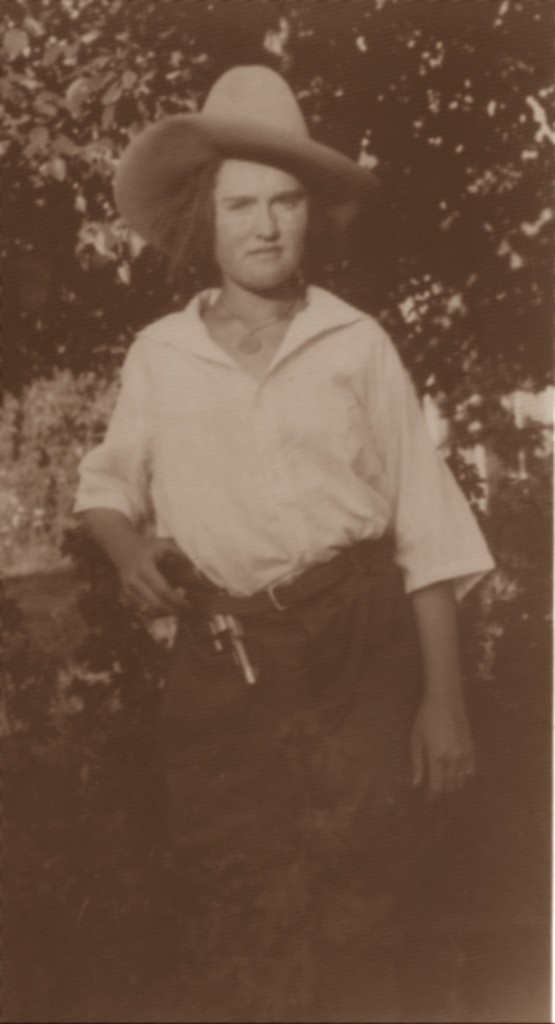
Mary could do many things I could not do. In summer she could walk in the hot sand barefoot, she did not cry if she stepped on a sand burr. I can remember her carrying me piggyback through the burrs and hot sand, a bucket of water or vegetables in one hand. I do not know why she took me along. I was a crybaby or so they told me… I do not remember Mary crying about anything.
In 1908 Dad and Grandpa Murphy bought the Cane Spring ranch, they got a contract to carry the mail from Moab and LaSal to Hatch Wash where they met the carrier from Monticello. The mail was carried horse back in leather saddle bags.
The mail station or Half Way House was across the road from where the Hole-In-the-Rock is now. There was two small houses, one was to accomodate traveliers that stayed all night. The other was the kitchen, dining room and living quarters for the people who ran the Way Station. They were both washed away in big floods in 1910 and 1911 most of the farm was gone too.
The Indians came through by hundreds both Spring and Fall. They never bothered the mail station.
When Mother and Dad moved to the Cane Spring ranch they had three children, Mary, Verona (Me), and Annie who was born Feb.19,1907. Mary and I had a lot of fun at the ranch. The creek was narrow and there were a lot of bubbly springs, frogs to catch, lots of grass, flowers, butterflys and birds. Mary carried water from a pipe that came out of the rocks across the wash, the water was very cold, I could go with her and carry water too, there was no hot sand or burrs to go through.
There was a long table in the dining room, it always had a big white table cloth on it. Sometimes when people stopped to eat we would hide under the table, I more than Mary. We seldom got caught or kicked when someone stretched a leg. Then there was a big bull, when we caught him laying down we would slide off his back. I thought it fun to climb up his neck, sit on his head between his horns my legs down by his eyes. Then we got caught. Uncle Felix was scared and he spanked us both and sent us to the house telling us not to go near that bull or the corral again as that bull was mean. He had chased some of the men over the fence a few times and they had some bronko horses there too.

Just before Christmas Dad moved his family back to Moab. He was supposed to carry the mail from Moab to Cane Springs . He didn’t always make it so Uncle Heber would have to go. Dad had drinking problems.
Mother had her fourth child March 6, 1909, a little boy the named him William John after his father. He did not stay with the family long, he died March 30, 1909. Soon after that the family moved back to Cane Springs. It was better for Dad to be out of town because when he drank he liked to fight. When he came home drunk he always spanked Mary. I wondered why she did not hide from him as I did.
That fall Mary was six, the family moved back to Moab so she could go to school. I lived part time with Dad and Mother in Moab, then for awhile with Uncle Felix and Aunt Mame in Cane Springs, Dad carried the mail so of course I saw him both places.
I had lots of dolls to play with, Uncle Felix carved little dolls out of wood, Aunt Mame dressed them. Uncle Felix told me funny storys and he bought me other dolls, one was a beautiful China doll with long hair. I was so careful when playing with it.
Feb. 11, 1910 mother had another baby, a fair little baby girl they named her Neva Willma. Aunt Pearl, a young girl still in school loved that baby, played with her a lot. She spoiled her too.
Dad and Mother came to Cane Springs and almost the first thing Mary did was break my beautiful china doll. I saw her take it by the feet and hit its head on a stone hearth in front of the fire place. I never knew why she did that until years later. I cannot remember of even talking to her about it. Finally years later she told me Uncle Felix told Mother to take the doll from her before she broke it. That made her so mad she just broke it.
We lived around Dad’s people so much, they did have favorites. Most of his brothers liked Mary best, Uncle Felix liked me. The others were all right I just left them pretty much alone.
My formative years were spent under circumstances not much different from those of my Grandparents. Southeast Utah and the western slope of the Colorado was untouched by the whole ninetheenth centuary, because the treaty with the Indians was not signed until 1877. The Indians did not want to lose their winter camping ground in Spanish Valley, and some of them resented the white man even in the early 1900’s.
We traveled in covered wagons, buggys and horse back as everyone else did who lived in Southeast Utah.
Dad and Grandma Murphy filed on dry farms five miles south of Blanding. That was nearly 90 miles from Moab the way the roads curved and wandered through the hills and canyons, following the line of least resistence.
We moved back and forth from Moab to Blanding from 1910 to 1916. Mary’s job with my help was to drive from five to ten head of milk stock, all the way. I always got sick going to Blanding. Mary rode her poney, drove the cows, and learned to whistle. She also practiced swearing like Dad. To her a great accomplishment.
It usually took about two weeks for the trip. The wagons were overloaded for the small horses that had to pull them. The roads were sandy to Peters Hill and muddy from there to Blanding. There was dust storms in Dry Valley and rain the rest of the way. We usually traveled in the spring or fall.
Dad and his brother Jack went to Blanding first to look the country over; that is when Dad filed on his farm. They liked what they saw so Grandma went to have a look.
Mary went to school once again in Moab. Aunt Mame (Mary) Murphy married Theodore Duncan Nov. 25, 1910 in Moab. He was a veterinarian, fairly good for that time, he also trained race horses. He had two boys, Elven and Wendell.
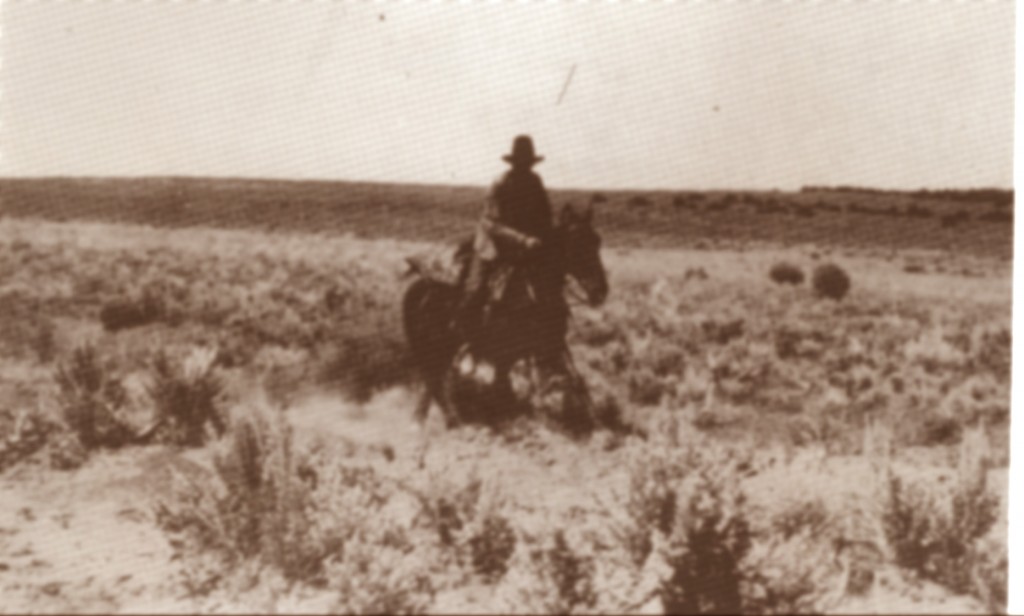 I liked riding in the back of the covered wagon, watching the Prarie Dogs, They always had a sentinel to warn the village if something did not look right, he barked and all the others scampered for their hole. When the danger was past, little hands began popping up all over, soon they were out feeding as usual. We went by so slow and their villages were so large I could watch for quite awhile.
I liked riding in the back of the covered wagon, watching the Prarie Dogs, They always had a sentinel to warn the village if something did not look right, he barked and all the others scampered for their hole. When the danger was past, little hands began popping up all over, soon they were out feeding as usual. We went by so slow and their villages were so large I could watch for quite awhile.
Dad got a mail contract, carrying the mail from Blanding to Bluff so in the spring of 1911 we arrived in Blanding with our milk cows, household goods. We lived in a dobie house a little north east of town, we did not have close neighbors; they were about four blocks away. We had about six horses to take care of besides the milk cows. Mother took them to water every day.
There were lots of Indians around. One day several mounted Indians dashed up to our door and demanded food. Polk a dangerous Indian was their leader. He knew Dad had gone to Bluff with the mail. Mother told them we had no food, Mary told them we had some bread. They took it all. We went to bed without supper. There was no flour to make more bread, and nothing else in the house to eat. Mother asked Mary why she did not keep quiet, Mary said,”you did not tell the truth.” The Indian had been rough with Mother when he pushed her out of the door. When Dad came home he was pretty upset about it. He told Mary in a case of that kind, kids should be seen and not heard. He talked to some of his Indian friends. We were not bothered again.
I started to school in Blanding, there were two rooms and two teachers to teach eight grades. The first to fourth grade in one room, fifth to eighth grade in the other room. There were long home made benches with a shelf for books and a lower bench to sit on. The teacher was a man who threw erasers and chock at any kids that did not pay attention or were noisey. When the erasers and chock started flying around I climbed onto the shelf where the books were and did not appear until the class was dismissed. No kids ever told on me. I only went to school three months, Mary told Mother and Dad the teacher would not miss me because he seldom saw me.
I had rhumatic fever; the folks did not know it and there was no Doctor to tell them. They said I was sickly, puny or had growing pains. They did not know I had a fever almost every afternoon.
I had a good imagination, I looked at pictures and made up my own stories. I memorized the stories I liked best in Mary’s school books. Mother helped Mary with her reading and spelling. The spelling was funny to me even then. It went like this, “Mother, ME, me. Mary, ME, you. Mother no it is YOU, you. Mary, YOU, me.” I don’t remember how it turned out, but she did learn how to spell. When school was out Dad gave up the mail contract and got a job working on the ditch that was being built to bring water from the Blue Mountains to the town of Blanding. He moved his family to the tent village where the construction crew was living in Recapture. I remember the John Johnson family.
We had two tents, Mother cooked in the little tent, we slept in the big tent and us kids played there too. One day we were singing Indian songs and doing Indian dances, or so we thought, when a strange voice joined in. To our astonishment, it was an Indian. We stopped but he made a few more circles imitating our version of Indian singing and dancing. In the doorway of the tent some more Indians were stamping their feet and laughing. The man that was dancing was a friend of Dad’s, we knew what a tease he was and we liked him. Johnny and Ada Johnson, Mary, Annie and I were the kids playing in that tent.
It was about a month later two Navajo trackers showed up and looked all around the tent we were playing in, then some men from Blanding came and they got Dad; he looked around, saddled Nickle, told Mother and Mrs Johnson to keep the kids close the them. Other men stopped work and came into camp, everybody just standing around talking except Dad, the mounted men from Blanding and the Navajos–they all left following the tracks of the man they were hunting. He was crazy and he had spent a lot of time just watching us kids. It was not long before they caught him. They tied him in a buggy and sent him to Provo.
We went to Moab for a visit sometime in August; we did not intend to stay long. Before we reached the Flat Ranches Annie fell out of the buggy and broke her leg. A man passing by sent word to the Doctor to be at the Murphy ranch when we arrived. The Doctor was waiting for us and he put splints on the leg which was broken in two places. That was before plaster casts. There was no moving around with a broken bone before it was healed.
Annie was put to bed in Grandpa’s and Grandma Murphy’s room. They moved into the big room of the Rock House which was their kitchen and dining room. It was very crowded.
Aunt Pearl was cooking for a sawmill crew on the mountain near Guyzer Pass. Her brothers, Felix and Heber worked there. Felix cut timber Heber, was a freighter. At that time he was hauling the lumber to the railroad in Thompson. I stayed on the mountain with aunt Pearl until school started. She liked to walk, and we picked wild strawberries and flowers, she watched for the freight wagons to come back, then she would cook up something special. Every one came to the big cook tent, Uncle Felix played his guitar or violin, Aunt Pearl and Uncle Heber and everybody danced. When I was there they could dance a quadrille as it took four couples. There was only three women in the camp. They taught me to waltze too. Oh, I was very proud to be treated like a lady. Uncle Heber and Aunt Pearl were always the life of the party.
One morning Uncle Heber was getting ready to take a load of lumber to Thompson; I was following him around as he harnessed the horses. I did not go around them I just went under. I went under one horse and Uncle Heber grabbed me and told me not to come around that horse again. The spats did not hurt but my feelings were hurt so I stayed away from them both, Uncle Heber and the horse.
Soon it was time for me to start school. Mary and I walked the 2 1/4 miles to school, although I was seven; my birthday being April 1, I could hardly make home sometimes my legs hurt so bad. Mary would almost carry me.
I soon learned I could not just memorize the words, I had to learn them. At recess and noon I played house with two friends when it was warm and if I felt good. One day two boys from Mary’s class came and wrecked our play house. Mary came, saw what the boys had done so she punched one in the nose. Dad had told us if we had to fight get in the first punch, bloody a nose or black an eye. That punch in the nose took all the fight out of that boy when he saw the blood. The other boy got a black eye, One of their friends passing by said no girl could whip him so he came swinging. It was a good fist fight but when he left he knew he had been in a fight and he could not win.
They did not make a feud out of the fight, they needed Mary on their baseball team. Sometimes there was not enough boys for a baseball team in that age group. The girls I remember playing with them most was Mary and Amy Stewart. I even played a little because Mary told them if I could hit the ball at all I could make a base. When she said I could I did.
I missed a lot of school because of rheumatic fever so I heard things and watched how people acted. Annie could still 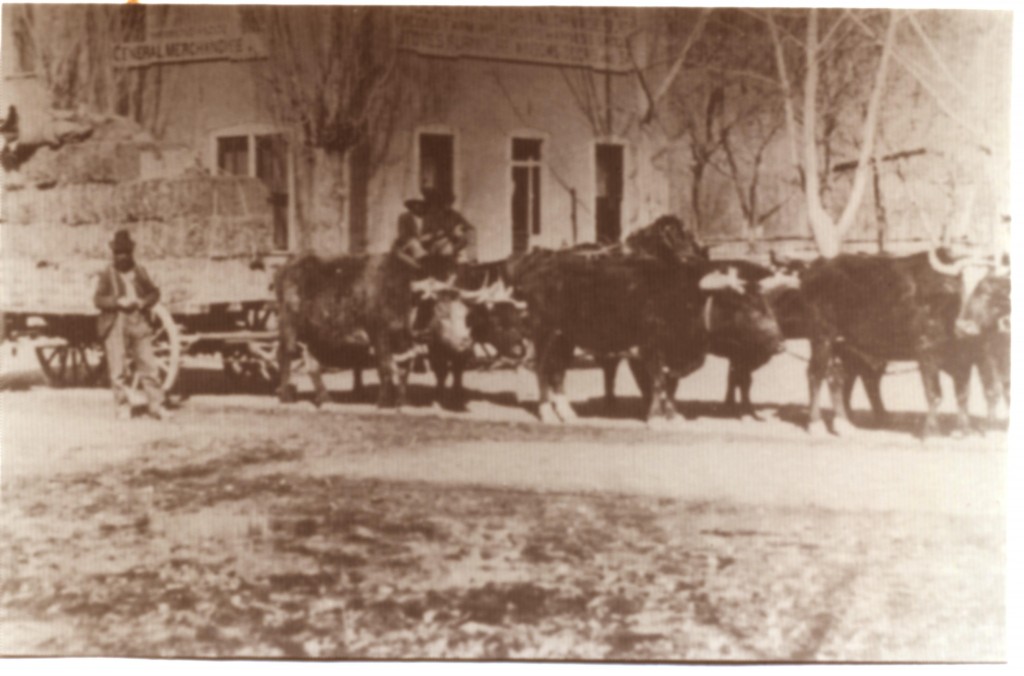 not be moved and being so young she required a lot of attention. Mother was having a hard time getting around. Grandma and Aunt Pearl resented us being in their home. They were L.D.S. and Irish, Mother was English and not a Mormon. Her folks had almost disowned her for marrying a Mormon. Mother had no defense against any of them. I learned to dislike my Grandmother at that time. I was too young to realize Grandma was having trouble with her legs, and Grandpa was old and needed more rest. Uncle Felix made Annie some crutches to use as soon as her leg healed enough and he started fixing up the Log cabin so we could move into it.
not be moved and being so young she required a lot of attention. Mother was having a hard time getting around. Grandma and Aunt Pearl resented us being in their home. They were L.D.S. and Irish, Mother was English and not a Mormon. Her folks had almost disowned her for marrying a Mormon. Mother had no defense against any of them. I learned to dislike my Grandmother at that time. I was too young to realize Grandma was having trouble with her legs, and Grandpa was old and needed more rest. Uncle Felix made Annie some crutches to use as soon as her leg healed enough and he started fixing up the Log cabin so we could move into it.
When Annie was better, Dad thought Mother could handle her, he went to Blanding after our things. Uncle Jack and Victor went with him and they stayed all winter. They moved the big tent to Dad’s farm to live in then they cut fence posts and before Dad came back to Moab he helped Jack get a few loads of poles off the mountain to build corrals.
When Dad got back to Moab he found that Mother was very sick, her baby was born Oct. 28, 1912. They named her Margaret Angeline. She was a sickly little thing. Mother had measles when she was born and they almost lost both Mother and baby. When Mother was able to take care of her baby we moved into the Log cabin. Mary could and did take care of Mother and she did most of her cooking, Dad was good about fixing breakfast, I did not mind doing the dishes, or bringing in wood.
April 1, 1913 my birthday. I was eight years old and Dad and Mother left for Blanding taking their three youngest daughters with them, also Grandma’s nephew and niece Arthur and Claudia Kimble and their daughter from Missouri. They left Mary and me with Grandpa and Grandma to finish out the school year.
I spent most of my time around the Cabin, Mary did not like to play dolls but sometimes Aunt Pearl would let us have a play dinner that suited Mary to bring the food and fix it for us, she always said the blessing. I left my dolls there until Uncle Victor, who had come home sometime in the winter, started throwing them out in the dirt and telling aunt Pearl that we wouldn’t take care of anything. She shut the door and kept us out for awhile. Uncle Felix told her what really happened. Victor was sick alot, bad appendix, he never did much work, he was the right age to be full of pranks, and we were good victims. I got the impression I did not like boys.
NEXT ISSUE: Driving cows to Monticello, farming in Blanding…and goats
that eat tobacco.
PHOTOS: Above, Uncle felix delivers the mail across Dry Valley. Below, a
wagon team in front of the Moab Merc (now the Poplar Place).
To read the PDF version of this article, click here: oct11-30-31 and oct11-32-33
Don’t forget the Zephyr Ads! All links are hot:

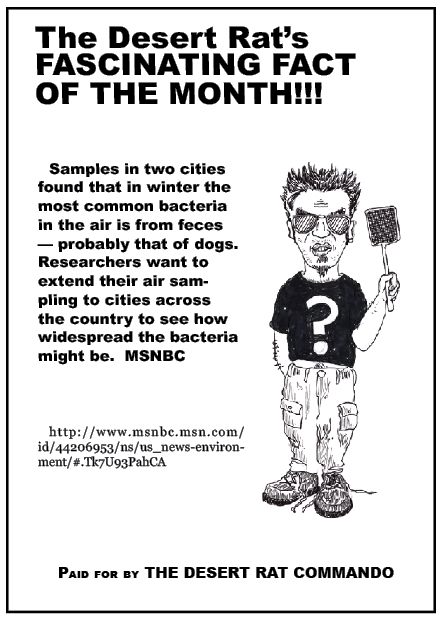
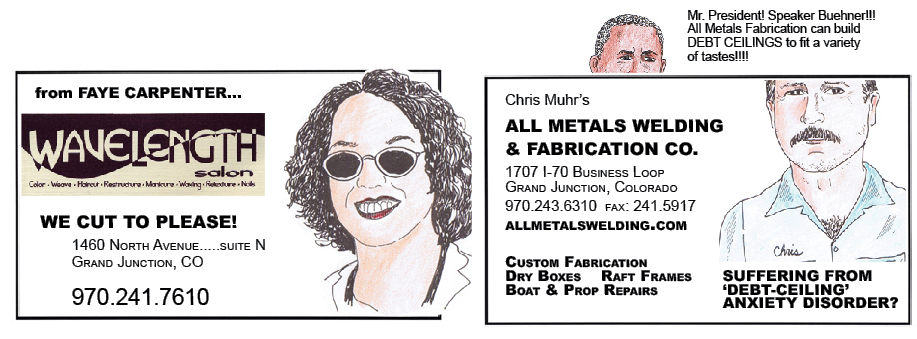
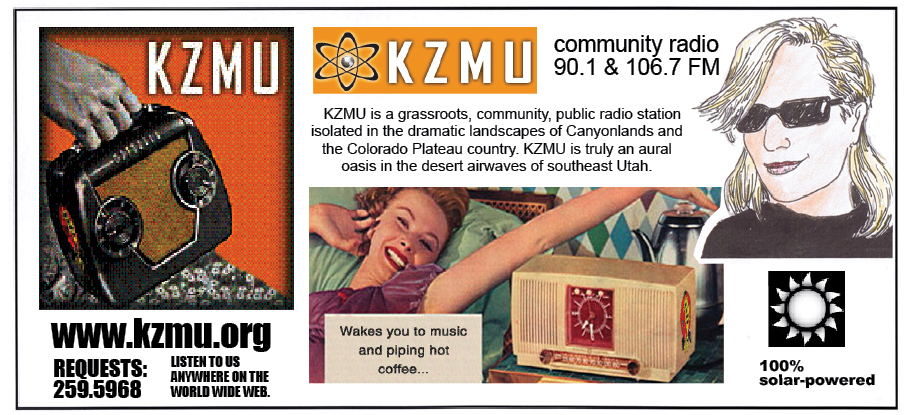
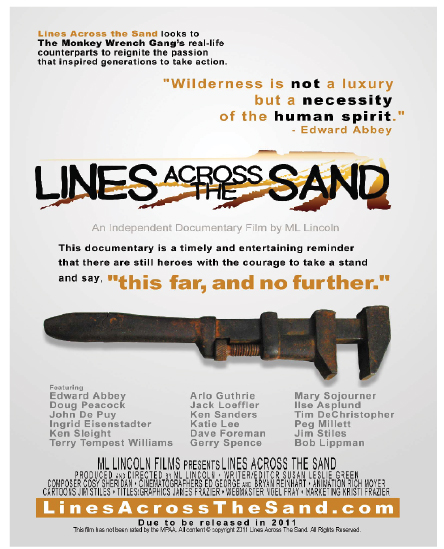




” Dad had told us if we had to fight get in the first punch, bloody a nose or black an eye. That punch in the nose took all the fight out of that boy when he saw the blood.”
I have been away from the Zephyr since the ’90s. Glad to see that Jim is still going strong as ever. Also glad to see his value in unexpurgated personal accounts. That’s how I transcribed Jonathan Troy way back when.
I really enjoyed reading this excerpt and can’t wait for the next one. We love visiting Utah and have passed through or stayed at the places mentioned in the article which make it even more enjoyable for me. Thank you for sharing.
Thank you for sharing